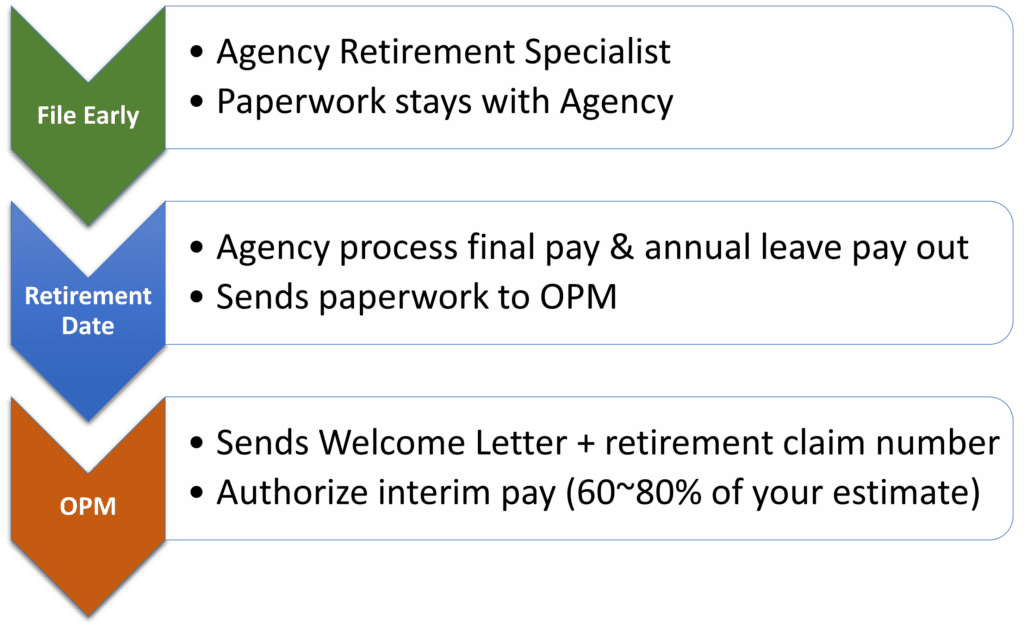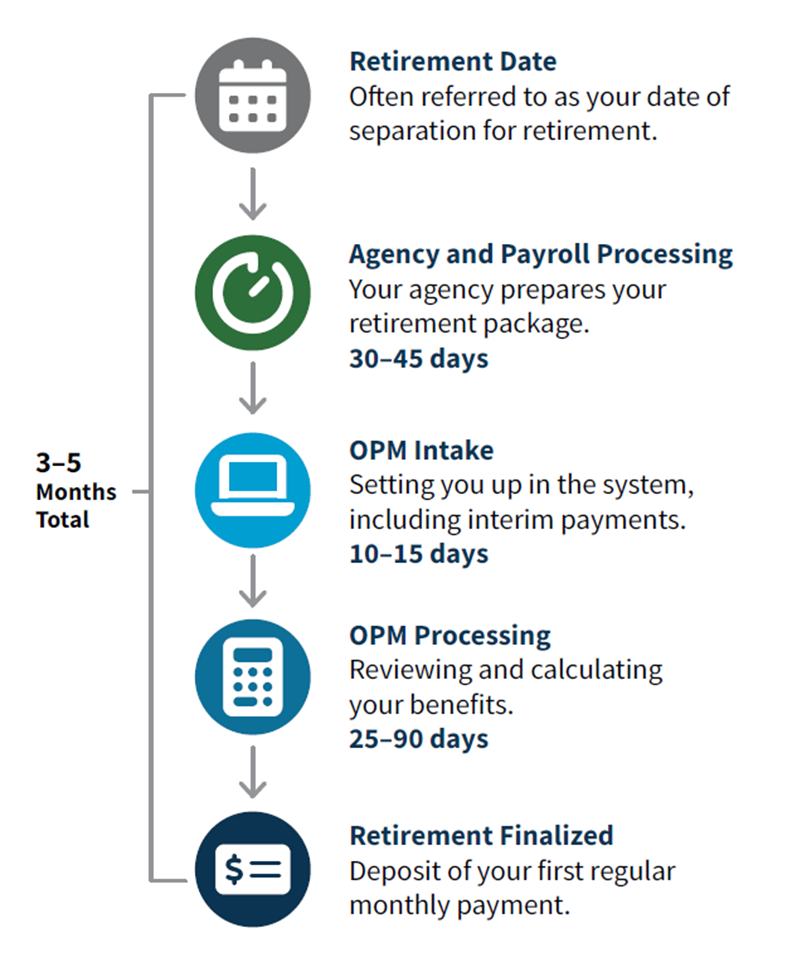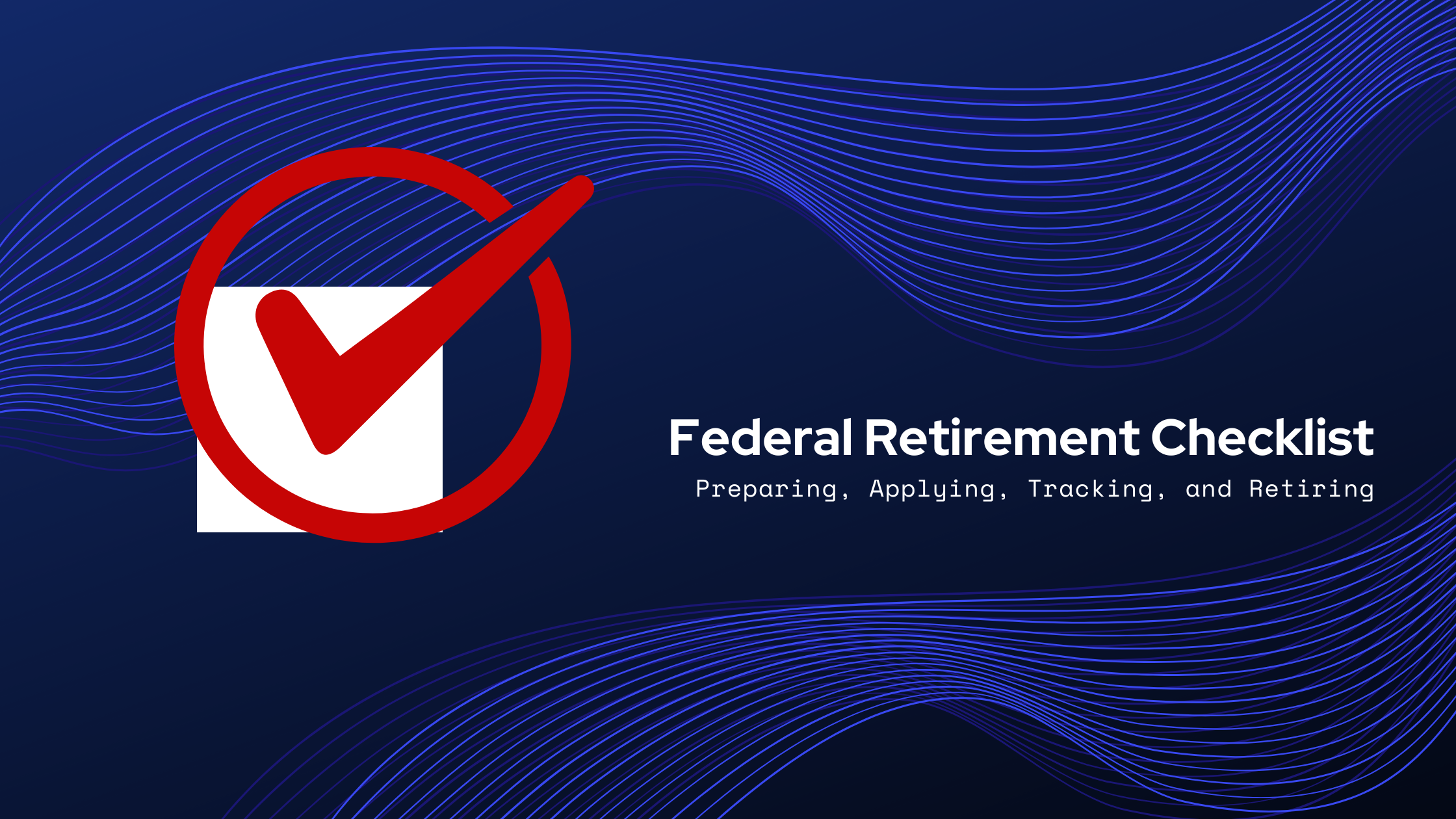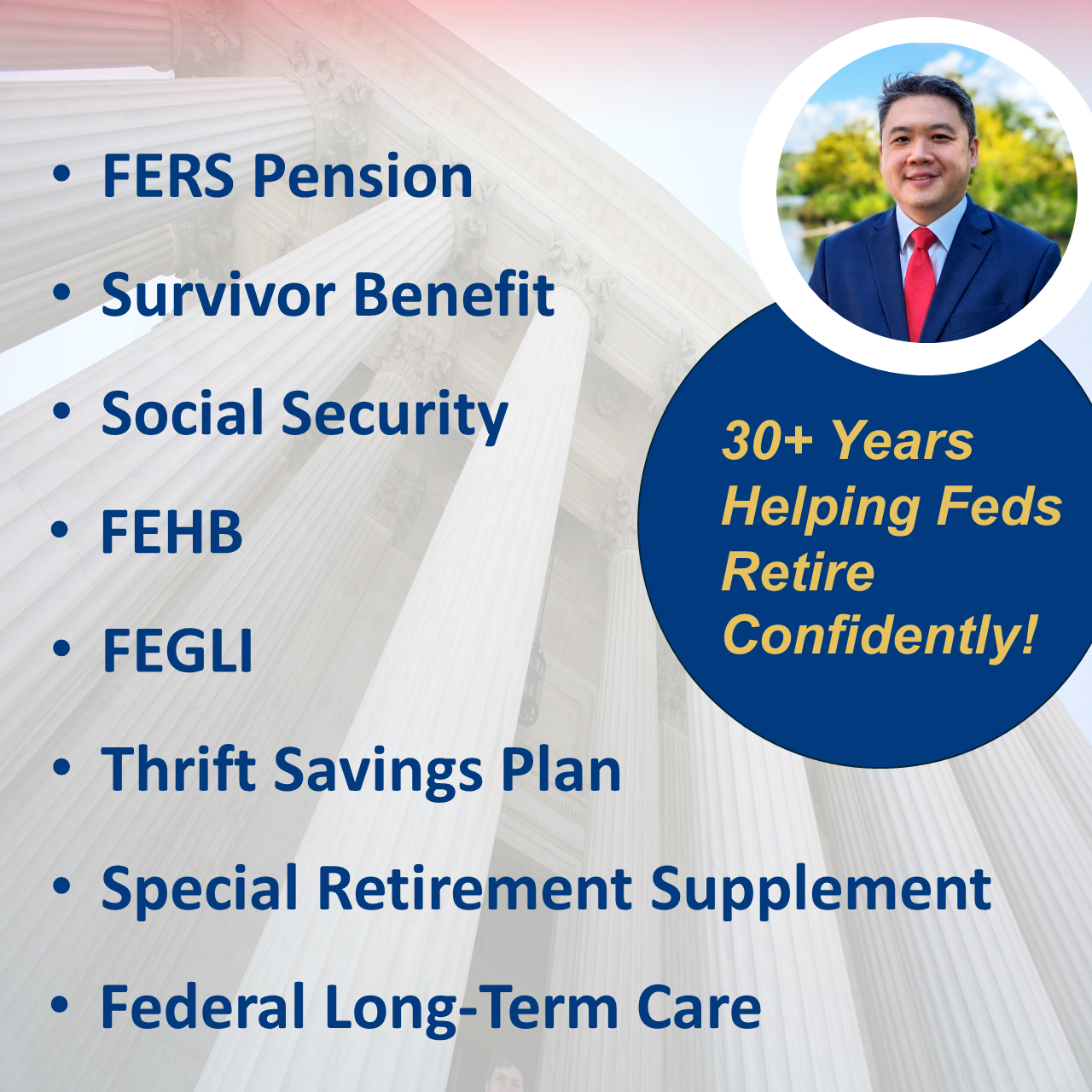Retire with confidence! Our FERS Federal Retirement Checklist covers essential federal employee benefits, financial planning, and upcoming 2025 webinars.
Understanding Federal Employee Retirement Benefits: A Federal Benefit Checklist
Federal retirement is a significant milestone for many employees who have dedicated years of service to the government. Understanding the intricacies of the federal retirement system is crucial for ensuring a smooth transition from active employment to retirement. This guide aims to provide a comprehensive overview of the federal retirement process, benefits, and strategies to maximize your retirement plan, starting a few years before retirement and concluding with the first year or so after leaving federal service.
What is the Federal Retirement Process?
Step One: Attend a Federal Retirement Webinar
Webinars can be an invaluable resource for federal employees planning their retirement. Many organizations offer webinar series that cover various aspects of the federal retirement process, although many can end up feeling like a long sales pitch for various services and products. The FERS webinars at PlanWell, however, provide an opportunity to learn from experts and ask questions about your specific situation while keeping the focus on federal employees and their benefits, packing numerous topics into one free 3-hour session.
Step Two: Review Benefits Package with Expert
Attending our federal retirement webinar offers numerous benefits, including access to expert advice and up-to-date information on retirement planning. Meeting with a benefits consultant at PlanWell Financial before applying can help you understand complex topics such as Medicare Part B enrollment, TSP withdrawal strategies, and countless other aspects of federal retirement benefits. Additionally, they can provide a free extensive benefits report and will review it with you to ensure there are no errors that may delay the application process after submitting application to OPM.
Estimate your retirement income now with our FERS Retirement Calculator
How We Help with Pre-Retirement Preparation
Before retiring, it’s crucial to take several important steps to avoid delays in processing your retirement application:
- Confirm that your Retirement Service Computation Date (RSCD) is correct. Note on RSCD below.
- Sign all necessary forms to ensure a smooth transition
- Secure your personnel records from eOPF for future reference
- Settle any outstanding balances for service credit accounts
- Gather all required supplemental documents, such as marriage certificates, military records, and court orders
RSCD is NOT Leave Service Computation Date (LSCD)
The RSCD is used to calculate your federal years of service for the pension calculation. It is important to not confuse the RSCD with the LSCD date that is on your leave and earnings (LES) statement. Often, the LSCD and RSCD are the same, however it is better to assume they are not. Primary reasons for having a different RSCD and LSCD include:
- Breaks in service
- Military time
- Entered service with higher per-pay-period leave
At retirement, OPM will review all of your SF-50’s to confirm the RSCD after you file retirement paperwork. You can verify your creditable service time by submitting form SF-3107 – go to page 9 of the form titled, “Certified Summary of Creditable Service.” Submit to HR to verify the RSCD. We recommend confirming the RSCD sooner than later to avoid any surprises come retirement. Picking a retirement date is one of the most significant decisions feds need to make at the end of their federal career. Are you retiring early, as soon as you meet the minimum federal retirement age with enough service to be eligible for an immediate pension? Have you explored postponed or deferred retirement scenarios?
Understanding Your Federal Employee Benefits Choices
Federal retirees have various benefit choices to consider, including:
- Health benefit coverage selection
- Enroll in Medicare (for postal employees, this is a requirement to keep your federal health coverage after retiring)
- FEGLI options (100%, 50%, 25%, none)
- Survivor Benefit election (50%, 25%, none) Note a surviving spouse will not be eligible for FEHB if no survivorship is selected
- Beneficiary designations
Factors That May Delay Retirement Processing
Several factors could potentially delay the processing of your retirement application, including:
- Court orders such as divorce decrees
- Specialized service experiences such as Special Provisions Employee (LEO, Firefighter, ATC, etc.)
- Past or ongoing workers’ compensation claims
- Service across multiple federal agencies
- Incomplete or inaccurate documentation
- Failure to update your address with OPM
Step Three. OPM Retirement Application Process and Timeline
How to Start Your Federal Retirement Application
Initiating the federal retirement process requires careful planning and attention to detail. The first step is to submit a retirement application to the Office of Personnel Management (OPM). This application includes various forms that detail your federal service history, retirement plan preferences, and personal information. It is essential to review your federal employee records to ensure accuracy and completeness before submission.

What Documents Are Needed for Federal Retirement?
For both CSRS (Civil Service Retirement System) and FERS (Federal Employee Retirement System) employees, to successfully apply for federal retirement, you must gather several critical documents. These include your federal service records, proof of age, and any documentation related to military service if applicable. Additionally, you will need to provide information about your health insurance coverage, such as FEHB or Postal Service Health Benefits (PSHB), and any other federal employee benefits you are entitled to. Ensuring that all documents are up-to-date and accurate will facilitate a smoother transition into retirement. Once the application is submitted to your agency’s HR department, you should receive a one-time lump-sum deposit for unused accumulated leave. That department should also provide guidance on when to expect your last paycheck and the timing of payments.
How Long Does the Federal Retirement Process Take?
The timeline for the federal retirement process can vary depending on several factors, including the completeness of your application and the OPM backlog.
Understanding the timeline of the retirement process can help you manage your expectations:
- Retirement processing typically begins after your official separation from your agency
- Your agency will prepare your retirement package within 30-45 days
- Upon OPM intake (10-15 days), you’ll receive a claim number and your first interim payment
- Interim payments are 60% to 80% of estimated final pension amount
- OPM will thoroughly review and calculate your benefits within 25-90 days
- Once your retirement is finalized, you’ll receive your first regular monthly payment and a personalized retirement booklet

Step Four. Tracking the Progress of FERS Retirement Application
It’s essential to monitor your retirement application’s progress:
- Utilize the OPM Quick Guide worksheet to track your progress.
- Create a Services Online account to receive updates and make changes to your information.
Interim Pay, Federal Employee Health Benefits, and Life Insurance
During the processing period, you’ll receive interim payments to cover expenses:
- Interim payments typically constitute 60-80% of your estimated annuity
- These payments do not include deductions for health care benefits or other expenses
Maintain your current health and life insurance coverage throughout the processing period:
- For health plans, dental and vision plans, and FEGLI, your existing policies will remain active, with premiums deducted from your adjustment payment once processing is complete.
What is the Role of Social Security and Thrift Savings Plan in Federal Retirement?
Social Security plays a vital role in the retirement plan for federal employees. As part of the FERS retirement system, federal employees contribute to Social Security throughout their careers. Upon reaching age 62, you can begin receiving Social Security benefits, which supplement your FERS annuity and TSP withdrawals. Understanding how Social Security benefits work in conjunction with your federal retirement benefits is essential for ensuring financial security in retirement. Managing TSP withdrawals and investment decisions safely at this time can be vital for maintaining a healthy financial plan.
Estimate retirement income with our TSP calculator
Step Five. Sit Back and Enjoy a Wonderful Retirement!
By following these steps and staying informed throughout the process, you can ensure a smooth transition into federal retirement. Financial professionals can assist with annual income taxes, estate planning, and managing retirement funds so you can make what you enjoy doing your main priority. Check out our upcoming webinars and start your retirement journey today!
Reach Out to Us!
If you have additional federal benefit questions, contact our team of CERTIFIED FINANCIAL PLANNER™ (CFP®), Chartered Federal Employee Benefits Consultants (ChFEBC℠), and Accredited Investment Fiduciary (AIF®). At PlanWell, we focus on retirement planning for federal employees. Learn more about our process designed for the career federal employee.
Preparing for a federal retirement? Check out our scheduled federal retirement workshops. Sign up for our no-cost federal retirement webinars using this link. Make sure to plan ahead and reserve your seat for our FERS webinar, held every three weeks. Want to have PlanWell host a federal retirement seminar for your agency? Reach out, and we’ll collaborate with HR to arrange an on-site FERS seminar.
Want to fast-track your federal retirement plan? Skip the FERS webinar and start a one-on-one conversation with a ChFEBC today. You can schedule a one-on-one meeting through our contact page.










